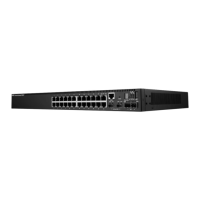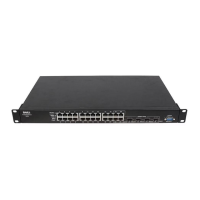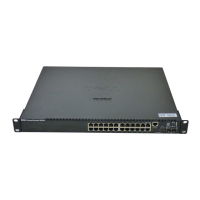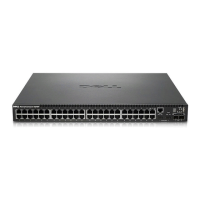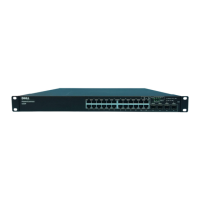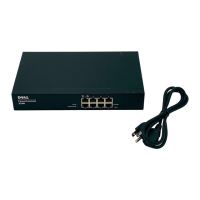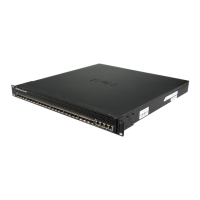Configuring System Information 75
•
From
— Defines the time that DST begins each year. For example, DST begins locally every second
Sunday in April at 5:00 am. The possible field values are:
–
Day
— The day of the week from which DST begins every year. The possible field range is
Sunday-Saturday.
–
Week
— The week within the month from which DST begins every year. The possible field range
is 1-5.
–
Month
— The month of the year in which DST begins every year. The possible field range is
Jan.-Dec.
–
Time
— The time at which DST begins every year. The field format is Hour:Minute,
for example, 02:10.
•
To
— Defines the recurring time that DST ends each year. For example, DST ends locally every fourth
Friday in October at 5:00 am. The possible field values are:
–
Day
— The day of the week at which DST ends every year. The possible field range is Sunday-Saturday.
–
Week
— The week within the month at which DST ends every year. The possible field range is 1-5.
–
Month
— The month of the year in which DST ends every year. The possible field range is
Jan.-Dec.
–
Time
— The time at which DST ends every year. The field format is Hour:Minute,
for example, 05:30.
Selecting a Clock Source
1
Open the
Time Synchronization
page.
2
Define the
Clock Source
field.
3
Click
Apply Changes
.
The Clock source is selected, and the device is updated.
Defining Local Clock Settings
1
Open the
Time Synchronization
page.
2
Define the
Recurring
fields.
3
Click
Apply Changes
.
The local clock settings are applied.
Defining the External SNTP Clock Settings
1
Open the
Time Synchronization
page.
2
Define the
fields.
3
Click
Apply Changes
.
The external clock settings are applied.

